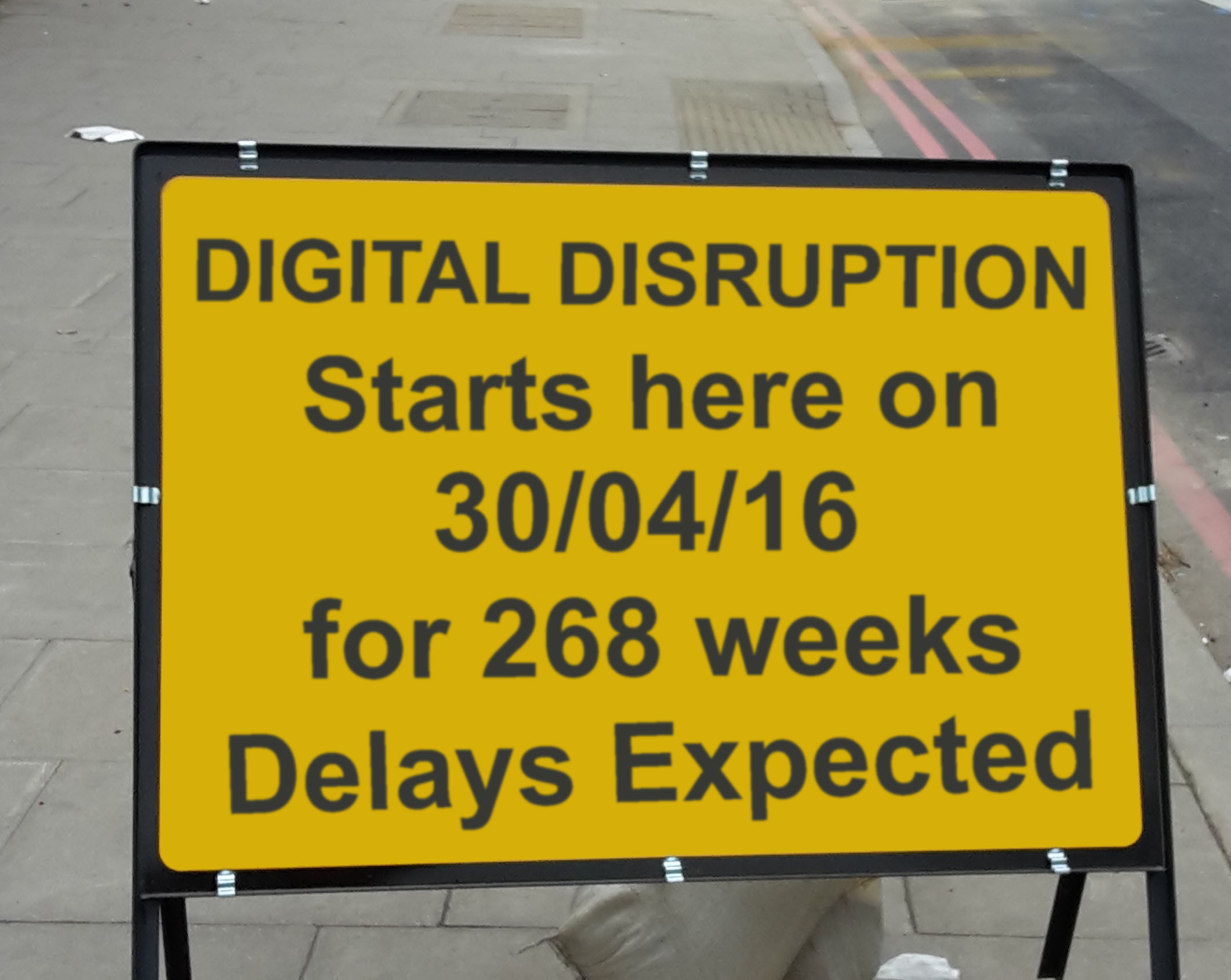It would be difficult to find a large organisation today which had not embarked upon a significant transformation program in response to a perceived threat of digital disruption. These programs tend to consume money and resources, divert attention from operational needs and (in many cases) fail to deliver demonstrable protection against digital threats or the potential to exploit digital opportunities.
Taking digital disruption seriously is an imperative, but there are several adverse patterns of behaviour adopted by enterprises when embarking on digital response programs:
1. Following a Superficial Approach
Although few would be willing to admit it, in many cases there is a passive assumption that setting up a team – devoting time, money and resources to the problem – is enough.
Other, more complex forms of superficiality include:
- Seeing the world as made up of digital predators and digital prey – it’s actually better represented as a continuum, where most organisations will be a blend of both.
- Obsessing about the fear of the danger, not the danger itself. Just because digital disruption is out there, doesn’t mean it’s a bad thing. Again, there will be good and bad aspects and each enterprise needs to understand the differences. Understanding what digital means to your own organisation, rather than the world in general, is critical.
2. Lack of Customer Focus
Organisations are not threatened by digital, per se, but by the effect that digital has on the markets in which they operate. Understanding how the competitive landscape is affected by digital – barriers to entry, commoditisation of products, combinatorial value propositions – is vital.
To support this, you need a clear, authoritative picture of your customer segments, your value propositions, the combinations they form and how each combination is affected by digital.
3. Lack of Attention to the Ecosystem
The impact of digital threats may be indirect, but equally serious. How exposed are your major suppliers to digital disruption? Your partners?
4. Playing Follow-my-leader
A common short-cut taken by organisations threatened by disruption is to assume that all will be well if the example set by early digital adopters is followed.
There is a strong temptation to simply copy what others are doing, leading once again to an over-simplification of the problem, and hence a mis-targeting of the solution.
5. Assuming it’s an IT Problem
Another very easy trap to fall into is to assume that, since digital disruption is caused by radical use of technology to realign business models, then the solution is to be found in IT alone.
Delegating the task of addressing the digital ‘problem’ to the IT function inevitably leads to a narrow focus on potential solutions and strategies.
Digital should be seen as a business capability issue, with due attention being paid to changes in people, process, knowledge and cultural dimensions, as well as adoption of new technology
6. Lack of agility.
 A major reason why many digital efforts fail is related to speed of response. In general, incumbent organisations are slower to react to change that their more agile, disruptive competitors.
A major reason why many digital efforts fail is related to speed of response. In general, incumbent organisations are slower to react to change that their more agile, disruptive competitors.
In addition, the speed with which the technologies themselves are developed and deployed is faster than in the past. Crafting new solutions to business problems has moved away from a formal, engineered approach towards an emphasis on rapid prototyping and development, modularisation of logic, and close attention to modularity and interoperability.
Organisations can find themselves in a position where the technology has been superseded before they have developed a strategy for exploiting it!
7. Lack of sustainability.
Closely linked to the concept of digital agility is the need for a resilient, sustainable approach to digital disruption. Organisations should know how they are going to handle digital threats as they emerge in the future, rather than just those that are evident in the present.
This implies the need to have a permanent, embedded responsibility for recognising and signalling up new digital disruptors as they arise (‘horizon scanning’).
Fundamentally, it also implies a responsibility for custody of the ‘digital strategy’ and for keeping that strategy evergreen.
This level of sustainability is only present in the most mature organisations, related to their approach to digital.
 Understanding the importance of ‘digital maturity’ and planning a path towards a more mature state are critical to long-term sustainability.
Understanding the importance of ‘digital maturity’ and planning a path towards a more mature state are critical to long-term sustainability.
At Kasei (www.kaseigroup.com) we guide enterprises through the process of establishing, executing and sustaining their digital strategy. We’d be interested in hearing your comments about the list above, relating to your own experiences.
